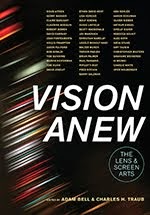
My review of Ivan Sigal's White Road (Steidl/Corcoran Gallery of Art, 2012) is now available on photo-eye. You can get the book here.
______________________________________________
In the late 1990s, Ivan Sigal journeyed to Central Asia with two goals. As an employee of Internews, he was tasked with initiating and assisting media projects in the region, but he also was drawn to the area as a photographer. However, the vast complexities of the region defied any simplistic answers or clichéd narratives. For almost ten years, Sigal lived, worked and photographed in Russia and Central Asia. Traveling through countries struggling to find their way in the aftermath of Soviet control, Sigal saw lives adrift, clinging to old traditions and yet yearning to break free of the legacy of Soviet rule. Realizing that imposing a preconceived narrative was foolish and deeply flawed, Sigal sought to create a personal yet evocative narrative of his experience while also illuminating the changing region. Enigmatic and defying expectations, Sigal's White Road uses own his nomadic experience and sense of dislocation as a lens to read and explore the landscape of post-Soviet Central Asia.


White Road is composed of two books that come in a simple cardboard book. The larger of the two books contains the photos and the second is composed of Sigal's diary entries. Although at first glance the boxed set and separate books seem excessive, the work would simply collapse without the supporting text – a rare occurrence for most photobooks. Divided into five sections, these read more like short stories or vignettes than traditional diary entries. Alternating between first, second and third person, there is an immediate sense of dislocation. Like a fitful daydream, the text places you simultaneously in the midst of Sigal's journey yet safely removed. The entries also reveal Sigal's peripatetic existence during his time in Central Asia – a veritable blur of vodka, cheap hotels, frustrating travel delays, cramped buses, shared car rides, late night parties and alcohol fuled conversations. Although the hardship of the journey is frankly addressed, the text is thankfully free of condescension, complaint or paternalistic regard. Instead, the hardships become a poetic refrain that enriches and give context to the images, Sigal's life on the road, and the people in the photographs.

Like the repetitions in the text, the images often come in multiple frames – looping and circling around the subject. At first, this seems like a lack of editing, but the rhythmic repetitions not only flesh out certain dramatic moments, but also give a poetic refrain to Sigal's travels and the people's lives he is documenting. Photographed mostly in Kazakhstan, Tajikistan and Russia, with several pictures from Uzbekistan and Afghanistan, the panoramic scenes and 35mm black and white images reveal factories, fisherman, weddings, makeshift circuses, private homes, hospitals and outdoor markets. Although there are times when the location seems clear, most of the time it is unknown save the picture index in the back of the book. Intersperced throughout the book are also full bleed images of maps in Russia that mark transitions and serve as chapter breaks.

Travelling throughout Central Asia, Sigal's book covers a wide terrain. Subjects and individuals are visited briefly and then left behind. This allows the images to fall neatly into Sigel's purposely ambiguous narrative. Unfortunately, in his attempt to avoid any forced narrative Sigal leaves his subjects largely nameless and voiceless. While the sense of dislocation is palpable in the text and images, Sigal's strategy runs the danger of merely reflecting his own restless state and creating another misleading narrative. This allows for a poetic narrative, which works nicely when paired with his text, but feels like it is avoiding a deeper engagement with his subjects. This may not have been possible given Sigal's frequent travels, or even desired, but recent examples like Rob Hornstra and Arnold Van Bruggen's excellent Sochi Project also point to the possibility of deeper engagement whilst still avoiding the false narratives Sigal seems to fear.
All images © Ivan Sigal and Steidl/Corcoran
As Roth explains in the book's afterword, "white road" loosely translates as "safe journey" in Kazakh, Kyrgyz and Uzbek. Written underneath signs on the Central Asian steppes, the words greeted Sigal, as well as countless other travelers, as they crossed the countryside. The auspicious words not only express the hospitality found in the people and towns Sigal visited, but they also recognize the hardships and unknowns that lay out in the expansive landscape. Deeply personal and heartfelt, Sigal's White Road offers us a poetic vision of a nomadic life and turbulent time, while also capturing a landscape and people caught between radical changes and the unshakable weight of history.
Please note: This review originally appeared on photo-eye on July 1st, 2013. You can get the book here.






